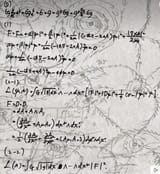>>149894872
>Can you define whether or not these equations could be applicable if used to define infinite sets?
>What Happens with Infinite Sets?
>The set of points of a manifold (even ordinary spacetime R4R4) is already an uncountably infinite set (cardinality ∣R∣∣R∣).
>So in practice, the equations are already applied to an infinite set of points.
>These equations are defined locally: the covariant derivative acts on fields point by point, and the Lagrangian density integrates over the manifold.
>This means they don’t care about the global “size” of the set (finite, countably infinite, or uncountably infinite).
>If you mean applying them to infinite-dimensional manifolds (like Banach or Hilbert manifolds), things change:
>Covariant derivatives can still be defined, but the analytic machinery becomes more delicate (e.g. no guaranteed partitions of unity in Fréchet manifolds).
>Gauge fields A and wavefunctions ψ could live in infinite-dimensional vector bundles.
>The formal structure (covariant derivative, curvature, action integrals) still makes sense, provided you can define smoothness and integration in that infinite-dimensional setting.
>Yes, these equations are already designed to work over infinite sets of points (spacetime itself is uncountably infinite).
This is what I got by plugging in the equation from pic related into chatgpt. So again, you're wrong.
